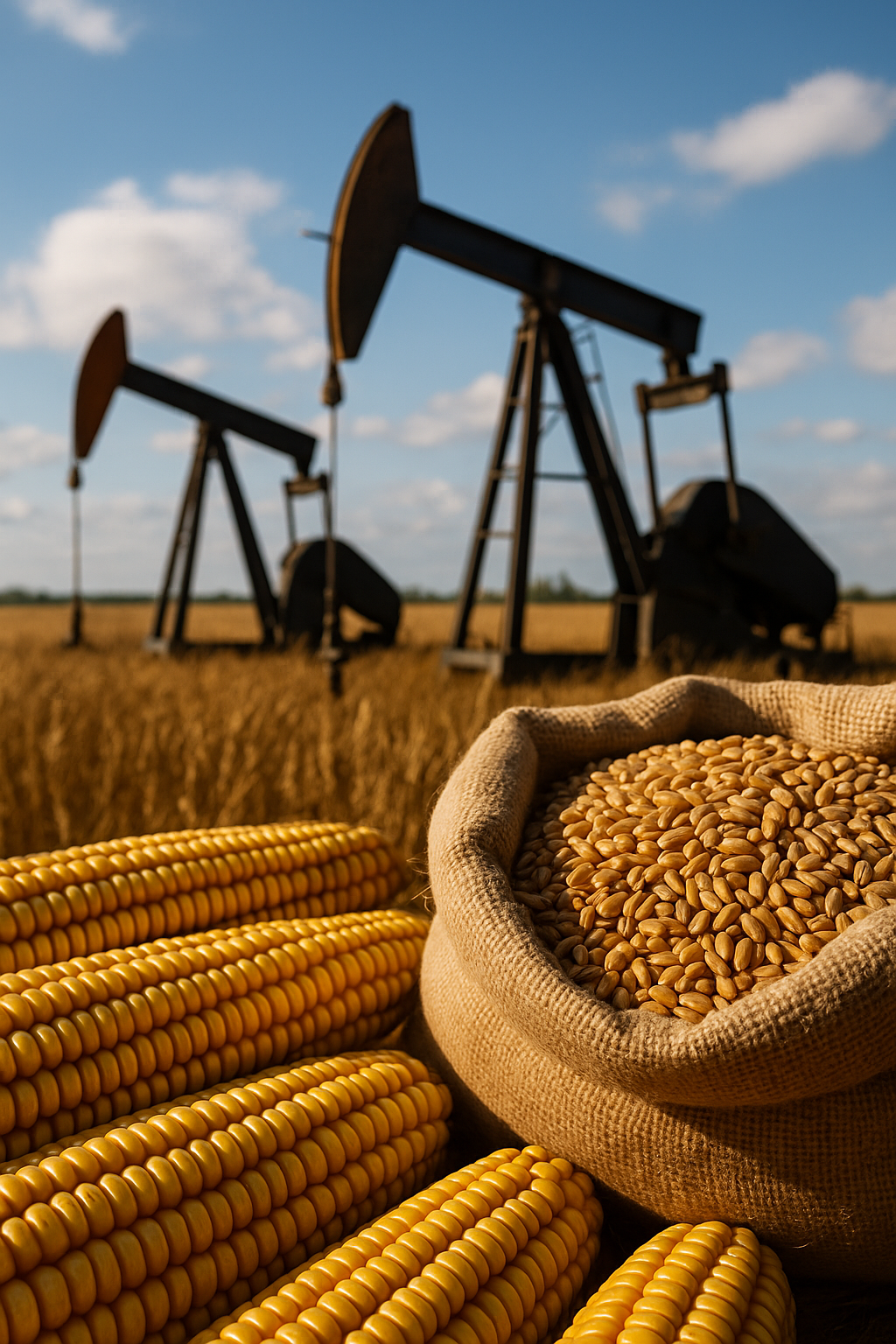Crisis-sensitive risk spillovers connect energy and food markets
The research highlights that energy–food market connectedness is highly crisis-sensitive, expanding dramatically during global disruptions such as recessions, pandemics, or wars. The authors find that these spillover patterns are shaped by evolving macro-financial and environmental forces that change the transmission structure over time.

A new study by Chinese and French researchers provides the most detailed evidence yet of how shocks in energy markets ripple through global food prices across different time horizons and statistical moments. The research reveals a complex, crisis-sensitive risk transmission network where crude oil acts as a persistent hub linking the two sectors.
Published under the title "Moment Connectedness and Driving Factors in the Energy–Food Nexus: A Time-Frequency Perspective," the paper introduces a multidimensional framework for mapping risk spillovers between energy and food markets. Using advanced statistical and machine-learning tools, the authors expose how returns, volatility, skewness, and kurtosis interact dynamically, and how macroeconomic, financial, and climate variables drive these linkages over time.
Crude oil as the central transmitter of risk
As per the analysis, crude oil remains the dominant transmitter of shocks to global food markets. Across all measured moments and timescales, oil prices influence grains and other staple commodities, transmitting both short-term market jitters and long-term volatility cycles.
To capture this structure, the authors develop an integrated framework that combines a GJRSK model, which measures time-varying volatility, skewness, and kurtosis, with time–frequency connectedness analysis and a random forest algorithm for identifying external drivers. This multidimensional design allows the researchers to see how different types of risk move between sectors not just over time, but across the statistical layers that shape market uncertainty.
Their findings show that return and skewness connectedness tend to be short-term, often peaking during crises when traders react to sudden price swings or supply shocks. Kurtosis, a measure of tail risk, dominates the medium-term, while volatility spillovers persist over longer horizons, reflecting structural relationships between energy and food production costs.
The analysis confirms that oil price shocks cascade through agricultural markets via multiple channels, from input costs and transportation expenses to speculative capital flows. During major crises, such as energy shortages or geopolitical conflicts, these linkages intensify sharply, leading to synchronized risk across commodities.
Crisis sensitivity and the role of global drivers
The research highlights that energy–food market connectedness is highly crisis-sensitive, expanding dramatically during global disruptions such as recessions, pandemics, or wars. The authors find that these spillover patterns are shaped by evolving macro-financial and environmental forces that change the transmission structure over time.
Through the random forest analysis, the study identifies four main categories of driving factors:
- Macroeconomic and financial conditions, including inflation, interest rates, and exchange rate volatility.
- Oil supply–demand fundamentals, such as OPEC production decisions and inventory changes.
- Policy uncertainty, both economic and environmental, that influences market expectations.
- Climate-related shocks, which affect crop yields, logistics, and the stability of food supply chains.
These drivers differ in their impact across statistical moments. For example, macro-financial conditions dominate volatility transmission, while climate and policy factors exert greater influence on skewness and kurtosis. This layered causality underscores that market contagion is not uniform, it depends on both the type of risk and the timescale at which it unfolds.
The authors stress that understanding these differentiated dynamics is essential for designing more responsive policy interventions. Traditional models that focus solely on volatility or mean spillovers, they argue, fail to capture the full spectrum of market instability now shaping global energy and food systems.
Implications for policymakers and market participants
The findings carry major implications for energy and food security policy, portfolio management, and global risk governance. The multidimensional nature of spillovers means that policymakers cannot rely on one-size-fits-all solutions or single-horizon monitoring frameworks.
For governments, the study suggests the need for coordinated oversight of commodity markets, especially during crises when cross-market contagion can amplify inflation and supply disruptions. Real-time tracking of short-, medium-, and long-term spillover effects could enhance early-warning systems for price instability.
For investors and market analysts, the authors point to the importance of moment-specific strategies. Short-term traders should focus on return and skewness connectedness, which respond quickly to shocks, while long-term hedgers should monitor volatility transmission to manage structural risks. The presence of kurtosis spillovers in the medium term also implies that extreme tail risks, though rare, should not be ignored in portfolio allocation.
The research further focuses on the growing role of machine learning in economic forecasting, with the random forest model providing new transparency into which external forces drive connectedness. By ranking variable importance across different horizons, the approach helps separate transient market noise from enduring structural influences.
In addition, the study raises questions about the impact of climate change on commodity interdependence, showing that environmental shocks increasingly contribute to the frequency and magnitude of cross-market contagion. As global temperatures rise and weather events become more extreme, the stability of both energy and food systems could face heightened correlated risk.
A framework for future research and risk monitoring
The authors call their time–frequency, moment-based approach a new lens for understanding systemic risk in interconnected markets. By combining econometrics with machine learning, it offers a replicable template for analyzing other market nexuses, such as energy–metals or finance–environment linkages.
They also note that while the current framework identifies leading drivers, it cannot yet explain complex causal pathways. Future research, they suggest, should integrate micro-level data, such as supply chain information and trading positions, to capture how firm behavior and investor sentiment reinforce global spillovers.
- FIRST PUBLISHED IN:
- Devdiscourse









